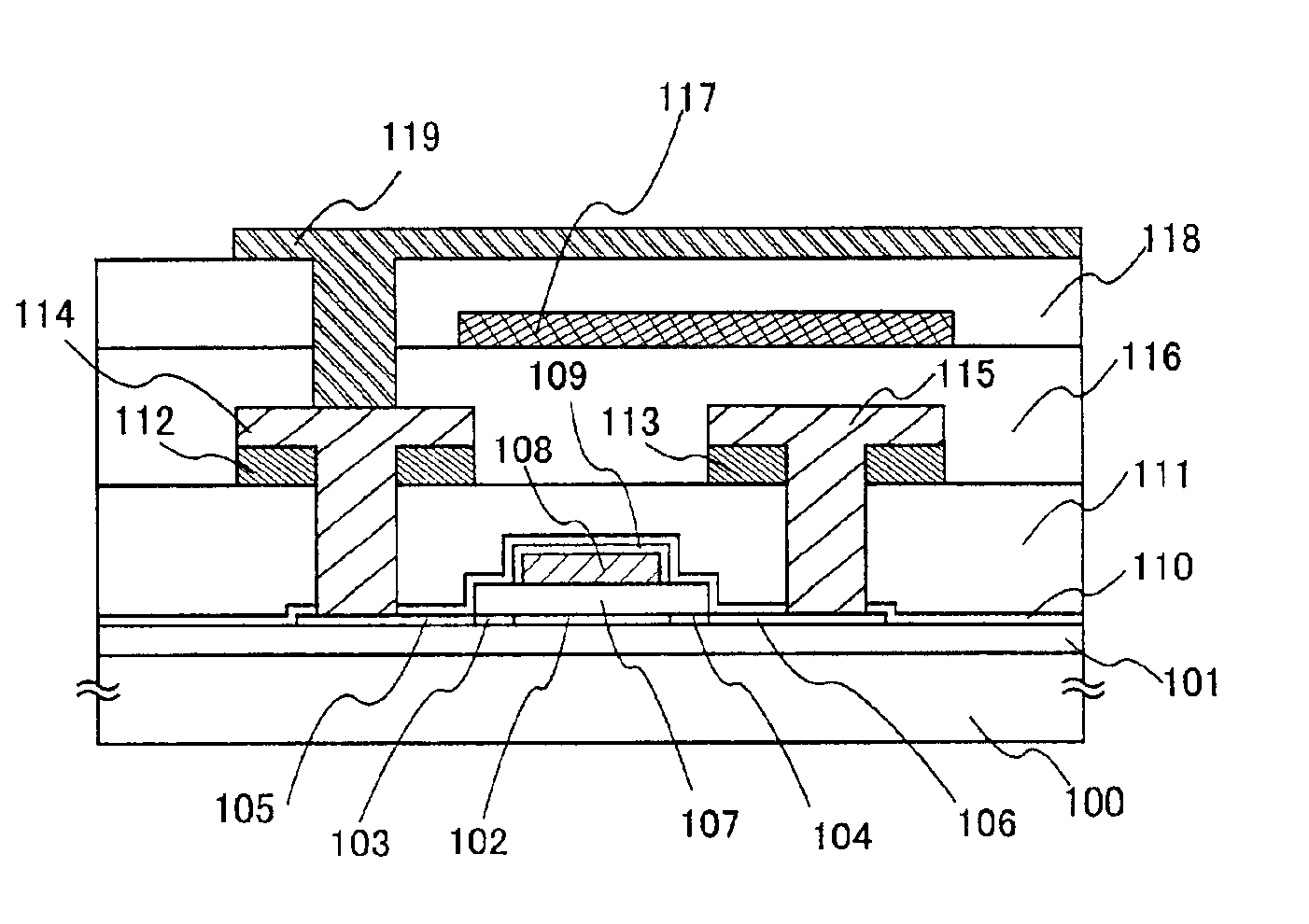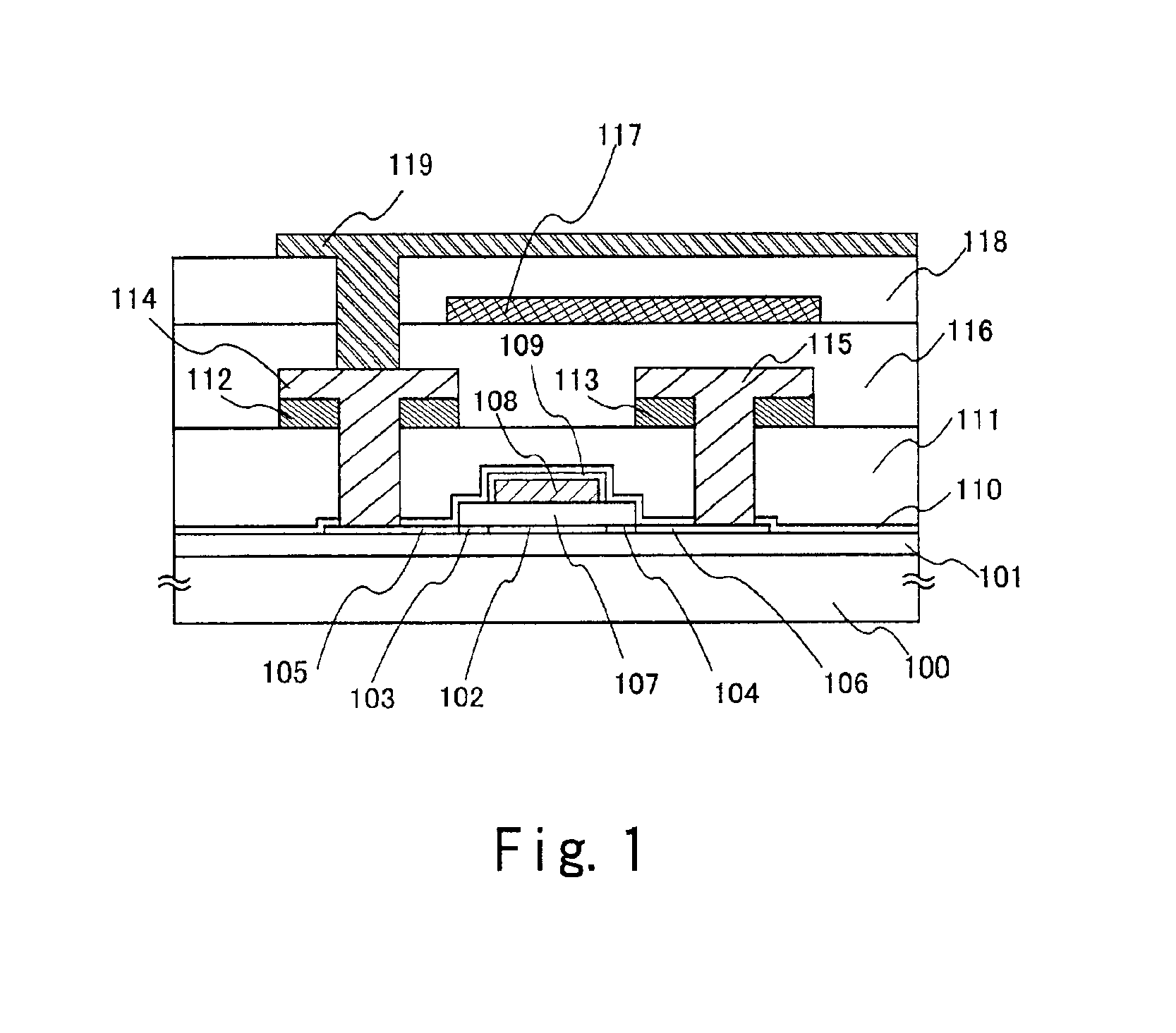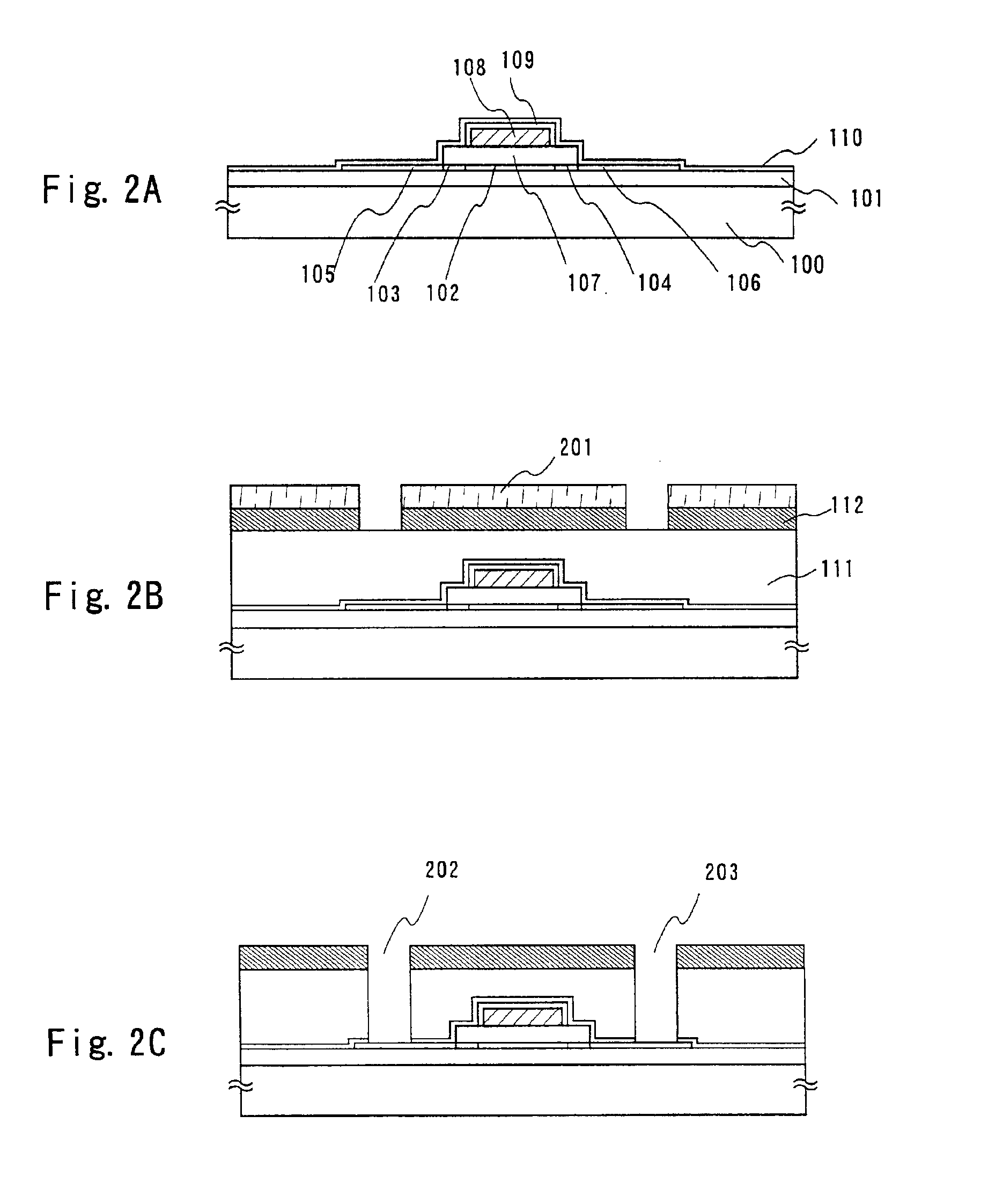Semiconductor device having multi-layer wiring
a semiconductor and multi-layer technology, applied in the direction of transistors, optics, instruments, etc., can solve the problems of difficult to ensure the selective ratio between the film of an organic material and the resist mask, low selectivity ratio, and difficulty in forming contact holes, etc., to achieve excellent contact properties and low resistance
- Summary
- Abstract
- Description
- Claims
- Application Information
AI Technical Summary
Benefits of technology
Problems solved by technology
Method used
Image
Examples
embodiment 1
This embodiment is explained referring to FIG. 1, which shows a cross-sectional structure of a semiconductor element of the present invention, fabricated on an insulating substrate.
Referring to the drawing, reference number 100 denotes a substrate and 101 denotes an underlying film. In addition, reference number 102 denotes a channel forming region, 103 and 104 denote low concentration impurity regions, 105 denotes a drain region, 106 a source region, 107 a gate insulating film, 108 a gate wiring, 109 an anode oxide film, and 110 a passivation film. Moreover, reference number 111 denotes an organic material film (a first inter-layer insulating film), 112 and 113 denote first metallic layers, 114 and 115 second metallic layers, 116 denotes an organic material film (a second inter-layer insulating film), and 117 a black mask. Still moreover, reference number 118 denotes an organic material film (a third inter-layer insulating film) and 119 a pixel electrode.
The wirings (112 to 115) ha...
embodiment 2
In this embodiment, a process for fabricating a semiconductor element, in particular, a process for forming contact holes and wirings, on a substrate having insulating surfaces, is explained below with reference to FIG. 2 and FIG. 3.
First, the underlying film 101 is formed on the substrate 100 having insulating surfaces. A glass substrate, a quartz substrate, a ceramic substrate, or a semiconductor substrate can be used as the substrate. A glass substrate was used in this embodiment. The underlying film can employ a silicon oxide film, a silicon nitride film, or a silicon oxinitride film, 100 to 300 nm in thickness of the film. This embodiment employs TEOS as a raw material to form a silicon oxide film 200 nm in thickness. Furthermore, if sufficient flatness is available such as a quartz substrate, no underlying film need be necessarily provided.
Next, an active layer is formed on the substrate or the underlying film. The active layer may be made up of a crystalline semiconductor fil...
embodiment 3
This embodiment is an example of employing an inversely staggered TFT, the structure of which is shown in FIG. 4. The processes of this embodiment, which are different from those for fabricating inversely staggered TFTs by means of a known technique, are as follows. That is, the process in which an organic material is used for an inter-layer insulating film 411, the process in which contact holes are formed by dry etching using a metallic film as a mask, and the process in which wirings are formed which are constituted by a first metallic film 412 and a second metallic film 414. Furthermore, the structure of the TFT is not limited to the configuration (a channel stop type) shown in FIG. 4. The present invention can be readily applied even to such a structure, for example, as has a channel etch TFT or a silicide structure.
PUM
| Property | Measurement | Unit |
|---|---|---|
| diameter | aaaaa | aaaaa |
| thickness | aaaaa | aaaaa |
| thickness | aaaaa | aaaaa |
Abstract
Description
Claims
Application Information
 Login to View More
Login to View More - R&D
- Intellectual Property
- Life Sciences
- Materials
- Tech Scout
- Unparalleled Data Quality
- Higher Quality Content
- 60% Fewer Hallucinations
Browse by: Latest US Patents, China's latest patents, Technical Efficacy Thesaurus, Application Domain, Technology Topic, Popular Technical Reports.
© 2025 PatSnap. All rights reserved.Legal|Privacy policy|Modern Slavery Act Transparency Statement|Sitemap|About US| Contact US: help@patsnap.com



